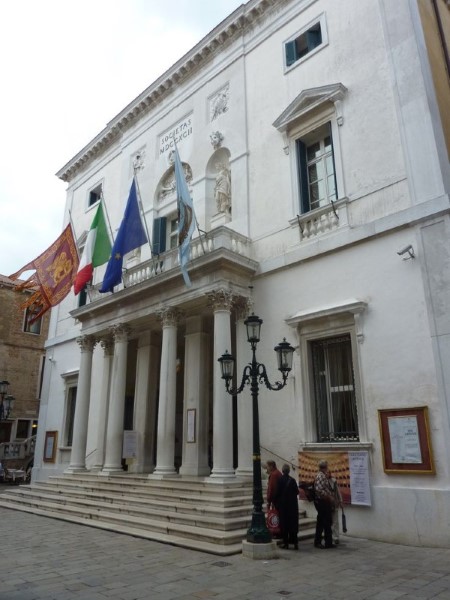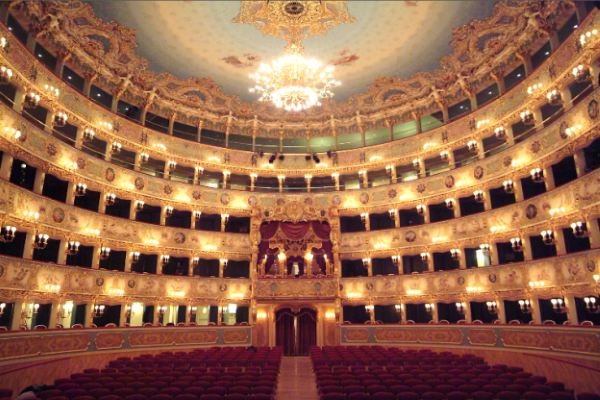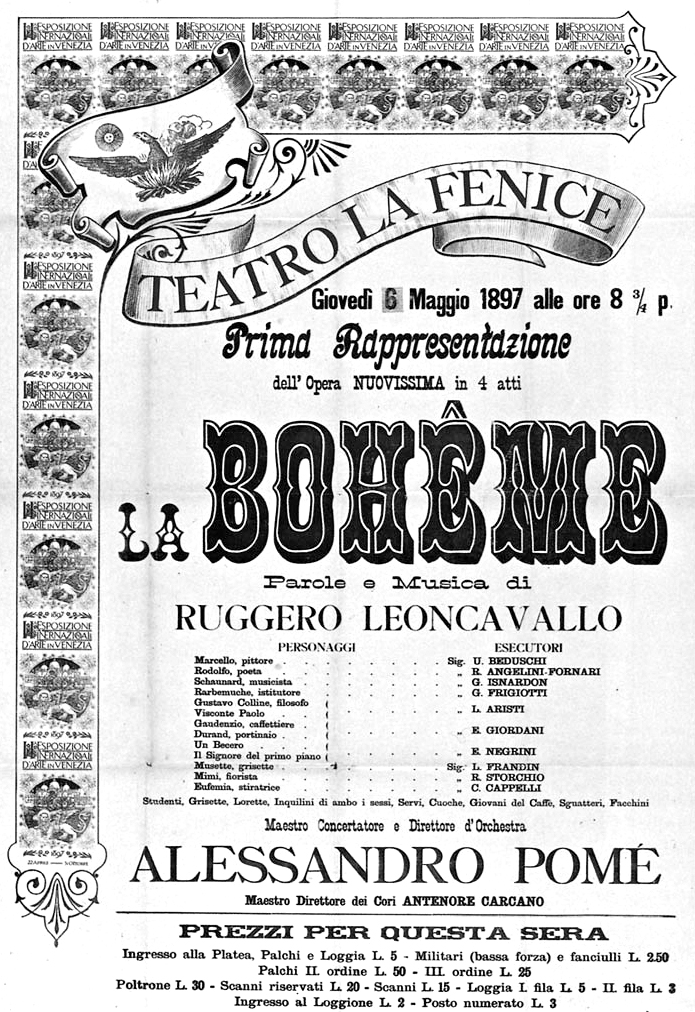- 06-05-1897.
- Visit La Boheme by Ruggero Leoncavallo (1857-1919). Worldpremiere.
- With Bernhard Pollini (1838-1897).
- Postcard to Justine (Ernestine) Rose-Mahler (1868-1938).
- Year 1897.
06-05-1897. La Fenice theater. Premiere La Boheme by Ruggero Leoncavallo (1857-1919). In presence of Gustav Mahler (1860-1911).
Teatro La Fenice (“The Phoenix”) is an opera house in Venice, Italy. It is one of “the most famous and renowned landmarks in the history of Italian theatre”, and in the history of opera as a whole. Especially in the 19th century, La Fenice became the site of many famous operatic premieres at which the works of several of the four major bel canto era composers—Rossini, Bellini, Donizetti, and Verdi were performed.

Its name reflects its role in permitting an opera company to “rise from the ashes” despite losing the use of three theatres to fire, the first in 1774 after the city’s leading house was destroyed and rebuilt but not opened until 1792; the second fire came in 1836, but rebuilding was completed within a year. However, the third fire was the result of arson. It destroyed the house in 1996 leaving only the exterior walls, but it was rebuilt and re-opened in November 2004.
In December 1836, disaster struck again when the theatre was destroyed by fire. However, it was quickly rebuilt with a design provided by the architect-engineer team of the brothers, Tommaso and Giovanni Battista Meduna (it). The interior displays a late-Empire luxury of gilt decorations, plushy extravagance and stucco. La Fenice once again rose from its ashes to open its doors on the evening of 26 December 1837.

Giuseppe Verdi’s association with La Fenice began in 1844, with the premiere performance of Ernani during the carnival season. Over the next 13 years, the premieres of Attila, Rigoletto, La traviata, and Simon Boccanegra took place there.
During the First World War, La Fenice was closed, but it reopened to become the scene of much activity, attracting many of the world’s greatest singers and conductors. In 1930, the Venice Biennale initiated the First International Festival of Contemporary Music, which brought such composers as Stravinsky and Britten, and more recently Berio, Nono, and Bussotti, to write for La Fenice.
On 29 January 1996, La Fenice was completely destroyed by fire. Only its acoustics were preserved, since Lamberto Tronchin, an Italian acoustician, had measured the acoustics two months earlier.
In fiction
Donna Leon’s debut novel, Death at La Fenice (1992), and the first in her Commissario (Detective) Guido Brunetti detective series, centers on a mystery surrounding the sensational death by cyanide poisoning of a famous orchestra conductor, in the midst of a production of La Traviata at La Fenice. In several scenes the opera house is described in meticulous detail, as it was at the time of writing, previous to the third fire.

